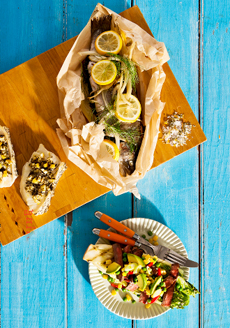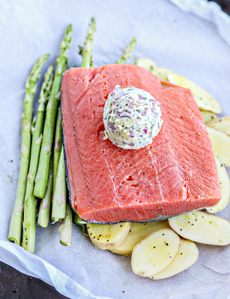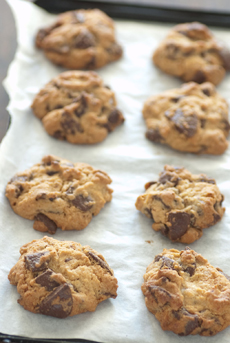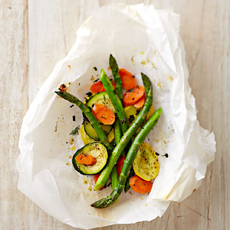TIP OF THE DAY: Cooking In Parchment, Or “En Papillote”
|
Today is the first-ever National Parchment Day, celebrated on the last Wednesday of June to bring awareness to those who have not yet discovered the joy of working with culinary parchment.
The holiday was created by PaperChef, a leading producer of premium culinary parchment. The right way to declare a holiday is to submit a proposal to the federal government, state or local government. A less official way to do it is to submit it to the National Day Calendar a commercial venture originally begun as a hobby by two enthusiasts in North Dakota. Culinary parchment paper, also called kitchen parchment and bakery paper or baking paper, is a cellulose-based paper that provides a disposable, non-stick surface. It is a popular aid for oven cooking: It saves greasing and enables easy clean-up. It also is used to create a packet for moist-heat cooking in the oven—for fish and shellfish, poultry, vegetables and so on. The French call this technique en papillote (on poppy-YOTE); it is al cartoccio in Italian, and cooking in parchment in English. The food is put into a folded pouch (parcel) and then baked in the oven. You can also cook in parchment on a grill, up to 425°F, using a metal plate on the top rack and closing the lid. Unlike aluminum foil, the parchment won’t scorch. Don’t confuse parchment with waxed paper, which has a thin coating of wax on each side to make it nonstick and moisture-resistant. Unlike parchment paper, it is not heat-resistant; the wax can melt and the paper can ignite in the oven. Parchment paper is impregnated with silicone, which prevents it from catching fire. But you can do the reverse: In most applications that call for wax paper as a non-stick surface, you can substitute parchment. Culinary parchment has only been available since the 19th century. The earliest reference we have found is in the London Practical Mechanics Journal in October 1858. We don’t know when it was applied to culinary use. Some sources cite the early 20th century. The 1858 reference suggests architects’ and engineers’ plans (today’s blueprints), tracing paper, bookbinding and maps. |

|
|
|
Before cooking parchment, according to the website of The Telegraph, a daily newspaper in the U.K., “cooks would have used normal sheets of whatever white paper was on hand.” The article references a cookbook from 1823 by Mary Eaton, for baking beef in an earthenware dish covered in “two or three thicknesses of writing paper.” She warns against using brown paper, because “the pitch and tar which it contains will give the meat a smoky bad taste.” More options in olden times: What the two parchments—animal and vegetable—have in common is their creamy white color. |
||

|
THE BENEFITS OF PARCHMENT PAPER
More many decades, cut sheets, or those cut from a roll of parchment, were the options for lining baking pans, cake and pie tins, casseroles and the like. Different formats evolved to meet consumer needs. They’re all over the Web, including on the website of PaperChef.com. |
|
|
|
||





